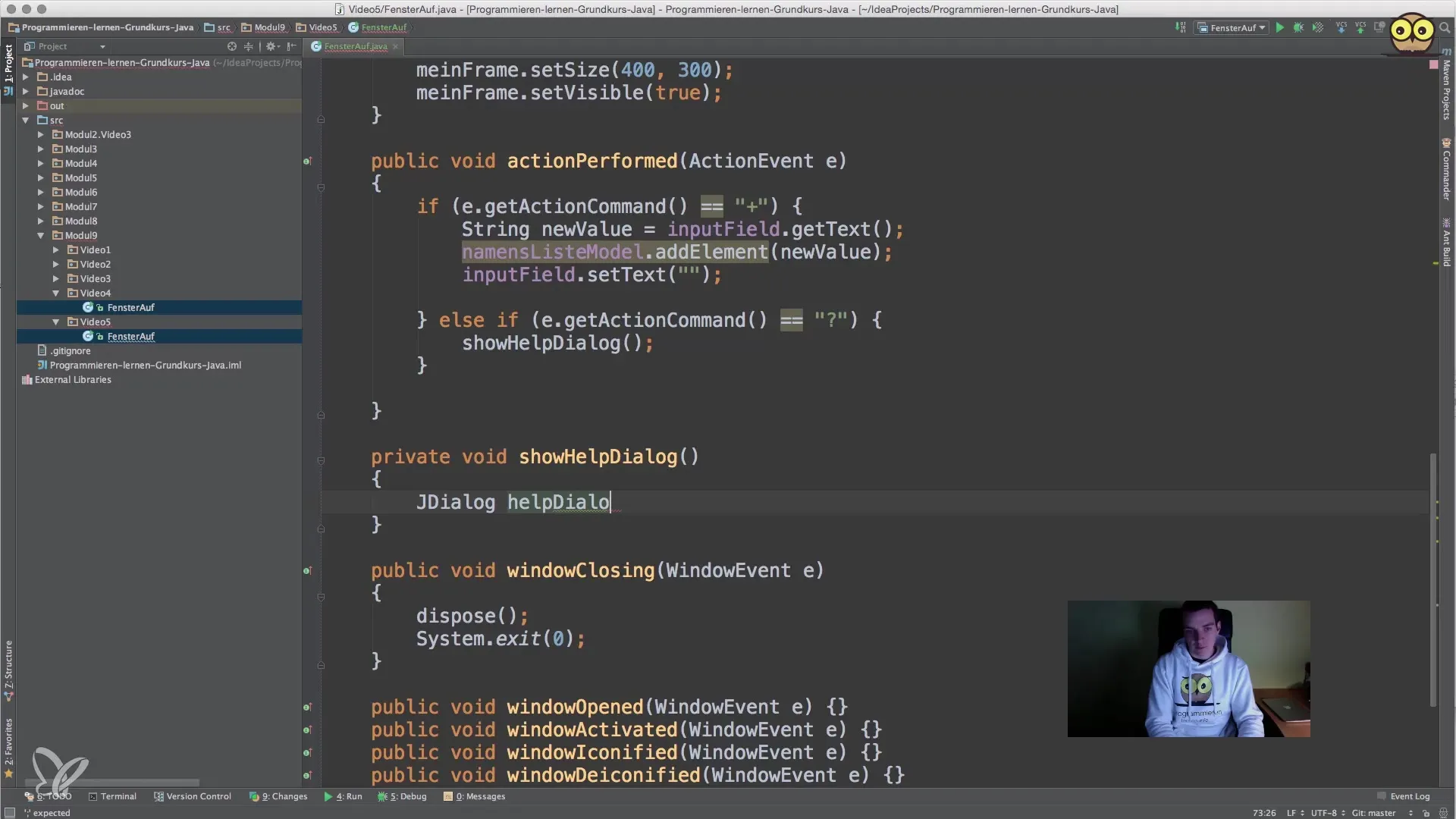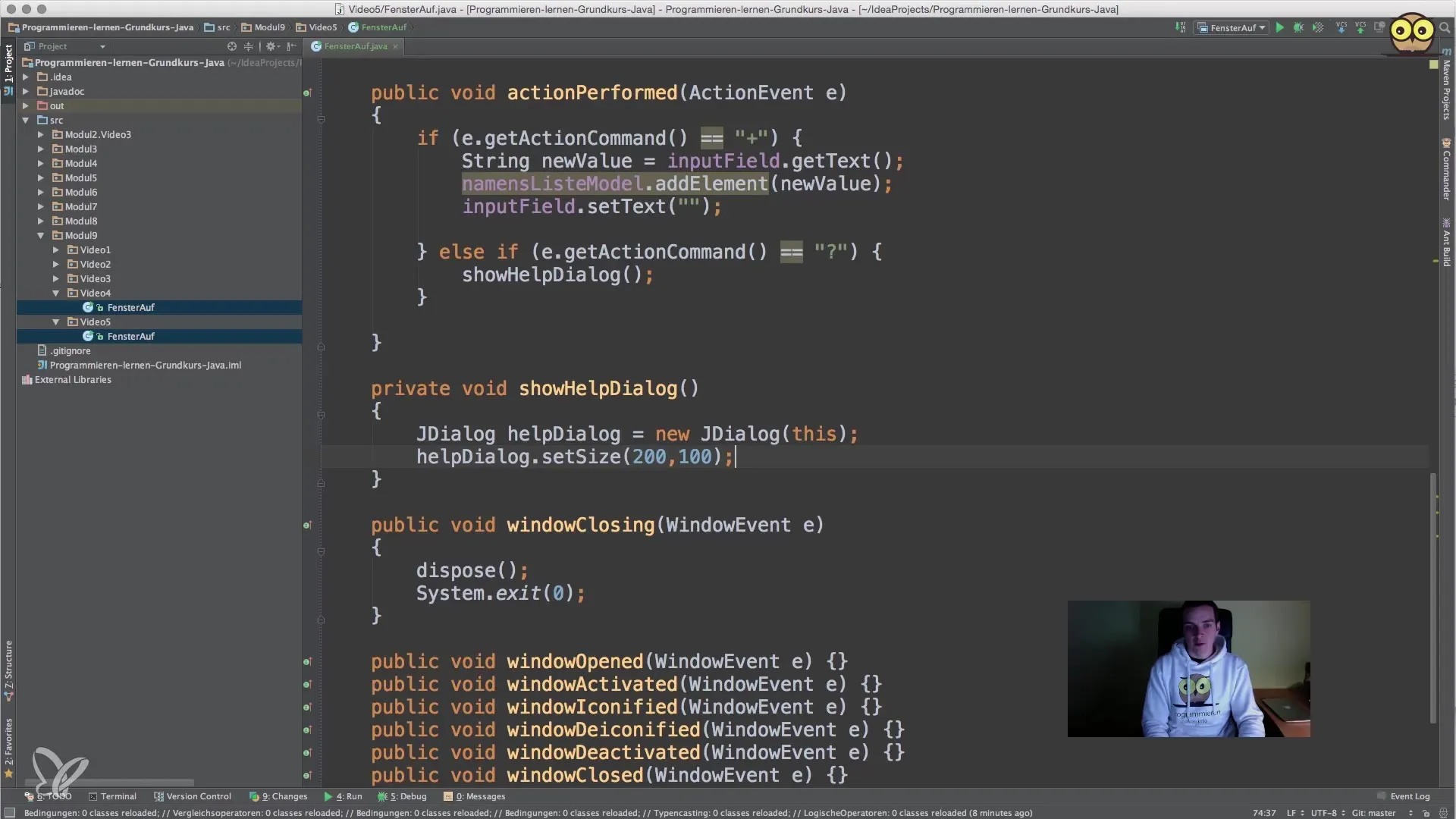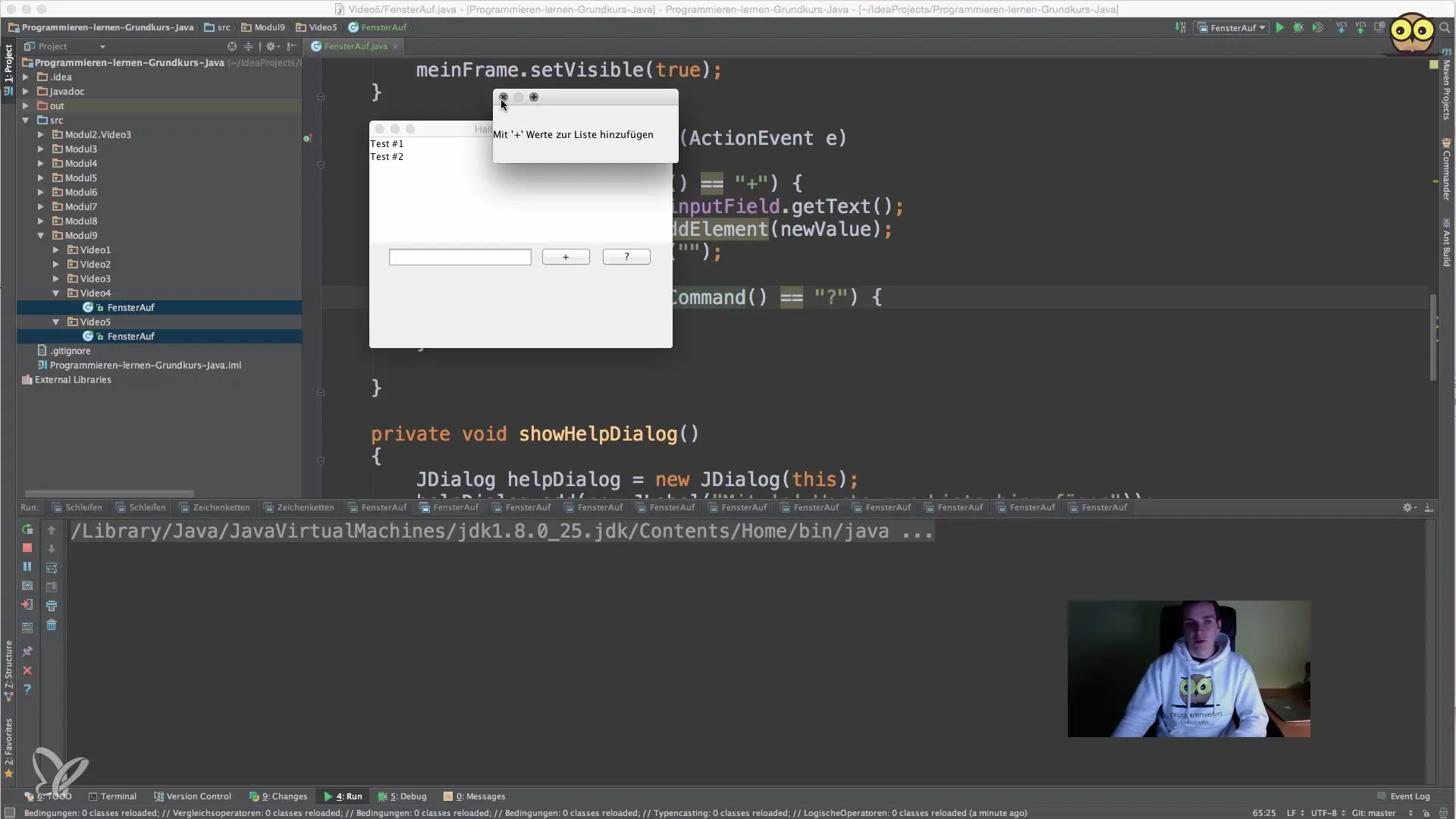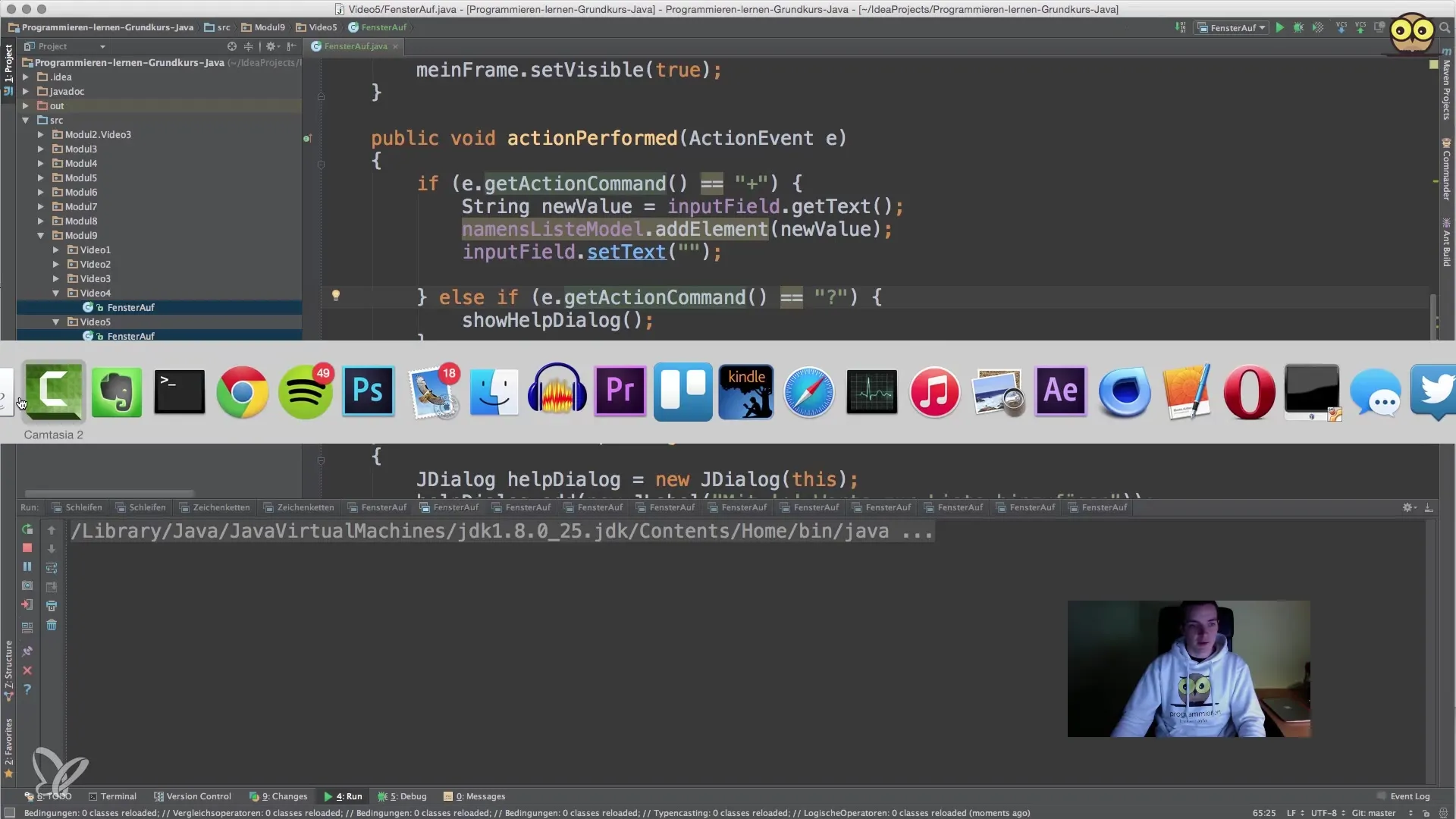Working with graphical user interfaces (GUIs) in Java opens up many possibilities for designing intuitive applications. An important component of this are dialog windows that display information to the user or ask for confirmation. In this tutorial, I will show you step by step how to create modal windows using the JDialog class, which make the background inactive during the interaction. You will learn how to build simple help dialogs and thus improve user guidance in your software.
Key Takeaways
- Dialogs are important elements of the user interface for controlling interactions.
- Modal windows make the background inactive until a decision is made.
- With JDialog, you can create custom dialogs that offer specific information or options.
Step-by-Step Guide
1. Basic Understanding of JDialog
Before you start programming, it is important to understand what JDialog is and how it differs from a normal JFrame. A JDialog is an additional window that provides information or input options while the rest of the application is blocked. This is achieved through modality, which ensures that the user must first interact in the dialog before returning to the main window.

2. Creating a New Dialog
To create a dialog, you first need an instance of JDialog. You can do this by calling the constructor of the class and specifying which JFrame the dialog should belong to.
The this refers to the current JFrame so that the dialog can be positioned correctly there.

3. Setting Size and Visibility of the Dialog
Once you have the instance of your dialog, you need to define its size and make the dialog visible.
Using setVisible(true) will display the dialog.

4. Enabling Modality
To enable the modality of the dialog, call the method setModal(true).
5. Creating Content for the Dialog
To provide useful information in the dialog for the user, you add a label or other input elements.
This label informs the user about what they should do.
6. Closing the Dialog
The user should have a way to close the dialog.
Using dispose() will close the dialog object.

7. Testing the Dialog
After you have implemented all the parts, run the program and test your dialog. Make sure that the main part of your application remains completely inactive during interaction with the dialog until you close the dialog.

Summary – Creating Dialogs in Java with JDialog
You learned how to create modal dialog windows in your Java application using the JDialog class. These dialogs help you control user interactions and improve user guidance. By utilizing JDialog, you can ensure that your application is both informative and user-friendly.
Frequently Asked Questions
How do I create a simple dialog in Java?To create a dialog, instantiate the class JDialog, set the modality, and add UI elements like labels and buttons.
What does it mean when a dialog is modal?A modal dialog blocks interaction with the rest of the application until the user has made a decision.
How can I insert information into a dialog?You can use UI elements like JLabel, JTextField, or JButton to insert content into the dialog.
How do I close a dialog in Java?You can call the method dispose() to close the dialog window.
What is the difference between JFrame and JDialog?A JFrame is the main window of your application, while a JDialog is an additional window that allows for specific interactions and blocks the background.


